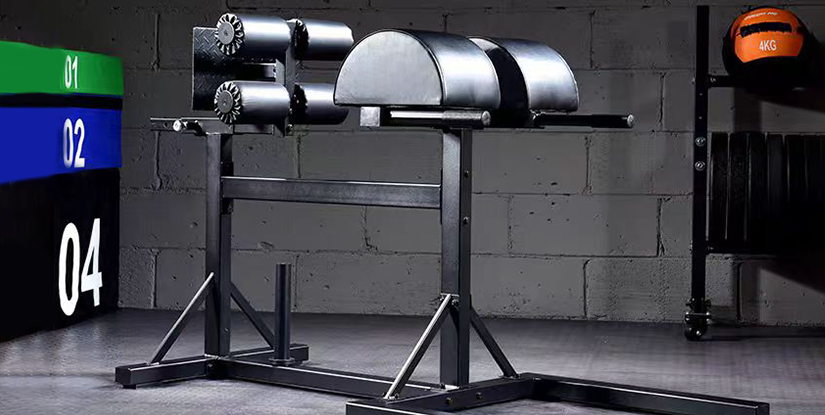Lat Pulldown Single Arm | Unilateral Lat Development & Technique

Lat Pulldown Single Arm: Purpose and Overview
The single-arm lat pulldown is a unilateral variation of the traditional lat pulldown that isolates each side of the latissimus dorsi, improves muscular balance, and enhances scapular stability. Performed on a cable machine with a single-handle attachment, it is an efficient movement for corrective work, unilateral strength development, and greater neuromuscular control.
Primary Muscles Targeted
- Latissimus dorsi (primary)
- Terres major and minor
- Biceps brachii and brachialis (assist)
- Posterior deltoid and rhomboids (stabilizers)
- Rotator cuff (stability)
Benefits
- Corrects left-right strength and size imbalances through unilateral loading.
- Enhances range of motion and mind-muscle connection on each side.
- Improves scapular control and shoulder joint stability.
- Reduces dominance of the stronger side during pulling movements.
- Versatile for hypertrophy, strength, and rehabilitation protocols.
Proper Setup
Begin seated at a cable lat pulldown station with a single D-handle or rope. Adjust the knee pads to secure your thighs and set the weight to an appropriate load—submaximal for technical work. Sit up tall with a neutral spine, chest slightly up, and shoulders down and back. Reach up and grasp the handle with a pronated or neutral grip depending on comfort and target emphasis.
Execution Steps
- Initiate the movement by retracting the scapula of the working side—think "elbow back, not just down."
- Pull the handle down toward the upper chest or armpit until the elbow passes the torso line; avoid excessive torso lean.
- Pause briefly at peak contraction, focusing on lat tension and scapular depression.
- Return under control to full arm extension while maintaining core stability and preventing shoulder shrug.
- Repeat for the prescribed reps, then switch sides to maintain balance in volume.
Programming and Load Selection
For hypertrophy: 3–4 sets of 8–12 reps per side with 60–85 seconds rest. Use a tempo that emphasizes the eccentric (2–3 seconds) and a controlled concentric. For strength and unilateral power: 4–6 sets of 4–6 reps per side, heavier load, longer rest (2–3 minutes), and focus on clean technical execution. For rehab or motor control: 2–3 sets of 10–15 slow, controlled reps focusing on scapular motion and pain-free range.
Common Mistakes and Corrections
- Using momentum or trunk lean: Reduce weight and cue upright posture and core bracing.
- Shrugging the shoulder: Emphasize scapular depression before elbow drive.
- Inconsistent range between sides: Track unilateral volume and measure ROM to correct asymmetry.
- Over-reliance on biceps: Slightly adjust grip to a neutral position and focus on initiating pull from the lat.
Variations and Progressions
- Seated single-arm pulldown with rotation: Add a small torso rotation to increase stretch and lat activation.
- Standing single-arm cable pulldown: Requires greater core stability and anti-rotation control.
- Incline bench single-arm pulldown: Reduces lower back compensation and increases isolation.
- Band-assisted single-arm pulldown: Useful for rehabilitation or managing load while practicing mechanics.
Integration into Training
The single-arm lat pulldown is an ideal accessory exercise after heavier bilateral pulling movements (e.g., weighted pull-ups, bent-over rows) or as a primary lat developer in upper-pull focused sessions. Alternate sides each set or complete all sets on one side then the other depending on fatigue management and coaching priorities. Track unilateral strength and range to identify improvements in symmetry.
Safety and Contraindications
Avoid high loads if you have acute shoulder pain, impingement symptoms, or uncontrolled rotator cuff pathology. Consult a qualified clinician for pain that persists. Emphasize scapular mechanics and stop if compensatory shoulder elevation or sharp pain occurs.
Sample Routine
- Warm-up: 8–10 minutes dynamic shoulder and thoracic mobility.
- Primary Pull: Weighted pull-ups or heavy rows — 3–5 sets.
- Accessory: Single-arm lat pulldown — 3 sets of 10 per side, tempo 2:1:2.
- Finisher: Face pulls or band pull-aparts — 3 sets of 15–20.
FAQs
- Q: Is single-arm pulldown better than bilateral? A: It depends—use single-arm for balance and unilateral control, bilateral for maximal load.
- Q: How often should I train it? A: 1–3 times weekly depending on goals and recovery.
- Q: Best grip to use? A: Neutral grips reduce biceps dominance; pronated grips emphasize lats.
- Q: Reps for muscle balance? A: 8–12 reps per side for hypertrophy with equal volume each side.
- Q: Can beginners perform this? A: Yes—use light loads and focus on scapular mechanics first.
- Q: How to progress? A: Increase load, add tempo changes, or reduce assistance gradually.
- Q: Any contraindications? A: Avoid heavy loads with shoulder impingement or acute pain.
- Q: Should I alternate sides each set? A: Both methods work; alternating helps manage fatigue symmetrically.
- Q: Do I need a cable machine? A: Ideally yes; bands can substitute but with different tension characteristics.

